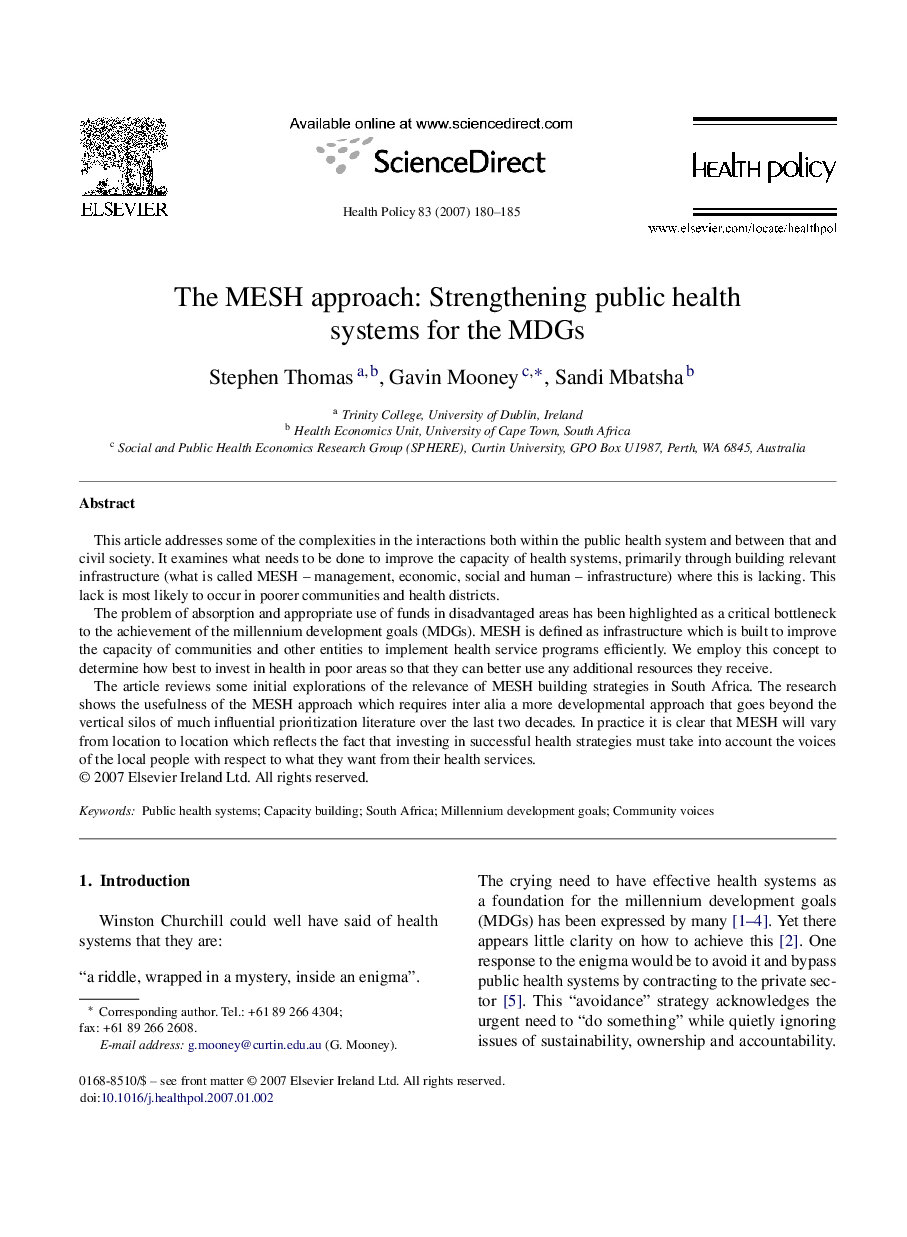| Article ID | Journal | Published Year | Pages | File Type |
|---|---|---|---|---|
| 4198941 | Health Policy | 2007 | 6 Pages |
This article addresses some of the complexities in the interactions both within the public health system and between that and civil society. It examines what needs to be done to improve the capacity of health systems, primarily through building relevant infrastructure (what is called MESH – management, economic, social and human – infrastructure) where this is lacking. This lack is most likely to occur in poorer communities and health districts.The problem of absorption and appropriate use of funds in disadvantaged areas has been highlighted as a critical bottleneck to the achievement of the millennium development goals (MDGs). MESH is defined as infrastructure which is built to improve the capacity of communities and other entities to implement health service programs efficiently. We employ this concept to determine how best to invest in health in poor areas so that they can better use any additional resources they receive.The article reviews some initial explorations of the relevance of MESH building strategies in South Africa. The research shows the usefulness of the MESH approach which requires inter alia a more developmental approach that goes beyond the vertical silos of much influential prioritization literature over the last two decades. In practice it is clear that MESH will vary from location to location which reflects the fact that investing in successful health strategies must take into account the voices of the local people with respect to what they want from their health services.
